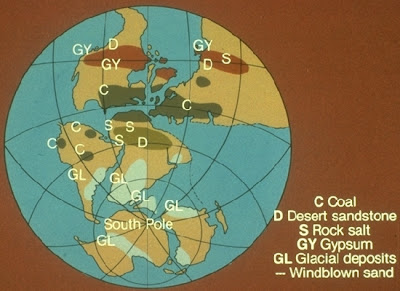From my research of continental drift, I have realized that evidence supporting this theory builds on one another and tying it all together. As new evidence is discovered, technology is developed and different branches of scientists contribute, the theory of continental drift seems more possible.
Photos:
add book ones!!!!
2. (No Author) Continental Drift. http://www.sci.csuhayward.edu/~lstrayer/geol2101/2101_Ch19_03.pdf [Accessed September 20- October 14 2010]
3. (Various Authors) 2009.Continental Drift. http://cosscience1.pbworks.com/Lesson+10-1+Continental+Drift [Accessed September 27, October 3-14 2010]
4. (No Author) From Continental Drift to Plate Tectonics: The Evidence. http://einstein.byu.edu/~masong/HTMstuff/textbookpdf/C31.pdf [Accessed October 10-14 2010]
5. Earth- learning idea. The continental jigsaw puzzle. http://aegsrv2.esci.keele.ac.uk/earthlearningidea/PDF/85_Continental_jigsaw_puzzle.pdf [Accessed September 20. 2010]
6. Pathlights. 2006. Drift and Tectonics. http://www.pathlights.com/ce_encyclopedia/Encyclopedia/19plat01.htm [Accessed October 10 2010]
7. Sant. J. 2010. Wegener and Continental Drift Theory. http://www.scientus.org/Wegener-Continental-Drift.html [Accessed September 20. 2010]
8. WGBH Educational Foundation. 2007. Continental Divide- The Break up of Pangea. http://www.teachersdomain.org/asset/lsps07_int_biogeography/ [Accessed September 27, October 3-14 2010]
Video:
Books:
Websites:
1. Chidrawi, G. Hollis, S. 2008. Preliminary Biology in focus. Australia: McGraw Hill Education
2. Edwards, J. 2005. Plate tectonics and Continental Drift. London: Evans Brothers Limited
3. Gallant, R. 2003. Plates: Restless Earth. USA: Earthworks
4. Heffernan, D. Mahon, R. McDougall, J. Gillies, K. 2002. Earth and Environmental Science- Preliminary. Australia: Science Press
5. Knapp, B. 2000. Plate Tectonics. Europe: Atlantic Europe Publishing
6. Murck, B. Skinner, B. 1999. Geology Today- Understanding our planet. USA: John Wiley and Sons, Inc.
Websites:











